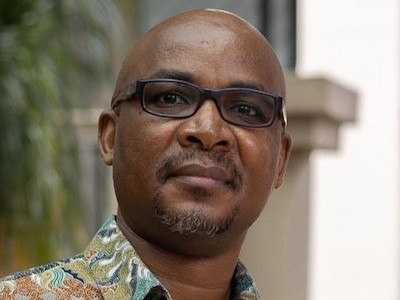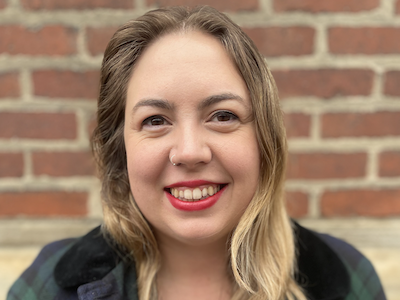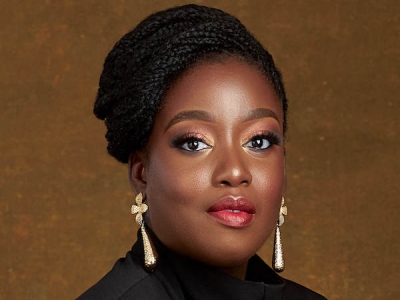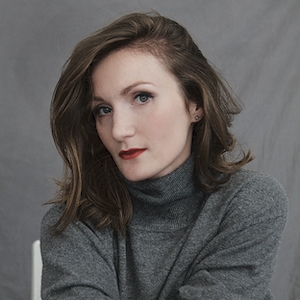 Meghan Lindsay is a performing artist and academic who’s an instructor in the MPNL program. She works with many grassroots arts organizations and collectives in exploring alternative ways of operating. She’s a PhD candidate in Cultural Studies, at Queen’s University, and has a MPNL degree. She carries a strong background in feminist, anti-oppressive and community-based research methodologies. Lindsay spoke to PANL Perspectives about the research and practise perspectives of arts…
Meghan Lindsay is a performing artist and academic who’s an instructor in the MPNL program. She works with many grassroots arts organizations and collectives in exploring alternative ways of operating. She’s a PhD candidate in Cultural Studies, at Queen’s University, and has a MPNL degree. She carries a strong background in feminist, anti-oppressive and community-based research methodologies. Lindsay spoke to PANL Perspectives about the research and practise perspectives of arts…
Question: How is your work as a performing artist connected to your work as an arts researcher?
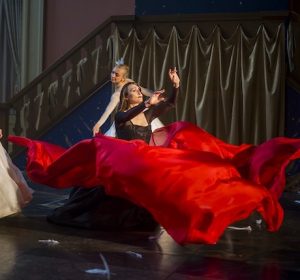
Megan Lindsay (as Mary Magdalene) in Opera Atelier’s “The Resurrection” (2021). Photo by Bruce Zinger.
Lindsay: As a musician, I’m very aware of the power of nonverbal communication. It has informed my curiosity about the “affective capacity” of words, images, sounds, structures and policies. Affects are the vital forces beyond emotions. They’re the shivers we get from watching or reading something compelling. Affects also flow through policies and structures, and can create barriers. The languages, expectations and institutional norms within the arts sector reproduce barriers for many.
My work deals with understanding how these seemingly intangible forces shape our everyday lives. Specifically, I’m curious about which systems support or hinder a healthy, safe and exciting artistic landscape. This often involves refuting a homogeneous definition of arts and culture. It involves honest conversations about the lived experiences of artists and of precarity. It involves reflection and a deep honour for a multitude of different cultural expressions.
Q: What have you been researching in terms of post-pandemic arts organizations?
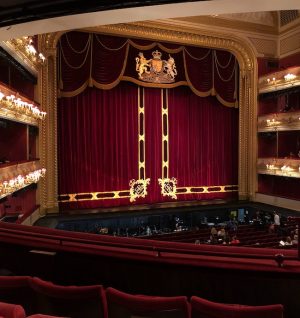 Lindsay: Right now, I’m working on a research project called “Pandemic Preparedness.” It’s a project funded by the British Academy that looks at policy responses to the COVID-19 pandemic in the performing arts in G7 countries. I just wrapped up “Being Together,” a SSHRC-funded project on how theatre audiences experience the feeling of being in close proximity. My ongoing work looks at how perceptions of “impact” are constructed between artists and mechanisms of public funding. Much of my research is rooted in understanding how artists relate to policies and institutional structures, and how these structures are positioned within civil society. In the wake of the pandemic, this work feels timely. Challenging, but timely. I’m grateful to be an artist doing this research. My experience has informed my approach.
Lindsay: Right now, I’m working on a research project called “Pandemic Preparedness.” It’s a project funded by the British Academy that looks at policy responses to the COVID-19 pandemic in the performing arts in G7 countries. I just wrapped up “Being Together,” a SSHRC-funded project on how theatre audiences experience the feeling of being in close proximity. My ongoing work looks at how perceptions of “impact” are constructed between artists and mechanisms of public funding. Much of my research is rooted in understanding how artists relate to policies and institutional structures, and how these structures are positioned within civil society. In the wake of the pandemic, this work feels timely. Challenging, but timely. I’m grateful to be an artist doing this research. My experience has informed my approach.
Q: What has changed in arts organizations in Canada since movements regarding racialized communities, Indigenous people and #MeToo?
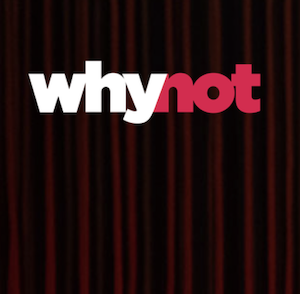 Lindsay: First, I want to be transparent about being a white settler working in both academia and classical music. There are people who would be able to speak to this question with more depth than I would, so I’d prefer to take this opportunity to point to the work of those leading change across the sector.
Lindsay: First, I want to be transparent about being a white settler working in both academia and classical music. There are people who would be able to speak to this question with more depth than I would, so I’d prefer to take this opportunity to point to the work of those leading change across the sector.
Governance can mean different things to different people. Many interesting organizations, like Why Not Theater, are working on subverting organizational structures and exploring new ideas of artistic leadership. They’re exploring new ideas for board governance and co-leadership, alongside a rich and innovative artistic season.
 I’m on the editorial committee of Newest, a Canadian digital magazine that looks at art and social justice. The perspectives, stories and issues that they’re moving forward are integral to redistributing power in the Canadian arts. Across the landscape, there’s conscious critique about the difference between calls for decolonization and actions toward decolonization.
I’m on the editorial committee of Newest, a Canadian digital magazine that looks at art and social justice. The perspectives, stories and issues that they’re moving forward are integral to redistributing power in the Canadian arts. Across the landscape, there’s conscious critique about the difference between calls for decolonization and actions toward decolonization.
 The Yellowhead Institute’s “A Culture of Exploitation: ‘Reconciliation’ and the Institutions of Canadian Art” touches on how Canadian art institutions have been plagued by tokenism and inequality. They point to a series of Standards of Achievement for the Relationship Between
The Yellowhead Institute’s “A Culture of Exploitation: ‘Reconciliation’ and the Institutions of Canadian Art” touches on how Canadian art institutions have been plagued by tokenism and inequality. They point to a series of Standards of Achievement for the Relationship Between
Indigenous Peoples & Cultural Institutions in Canada. This is a critical piece for anyone working in the arts in Canada.
Q: What are artists doing differently in terms of social issues and spaces?

Artscape, a group of not-for-profit organizations, was at the forefront of creating resources and spaces for artists. It entered into receivership this year.
Lindsay: Artists are increasingly engaged in advocacy, and the civic role of the arts is deeply embedded in practice.
It’s a complicated time. While we’re seeing artists de-centering Eurocentric knowledges and ways of being, the arts in Canada are deeply reliant on structures that many seek to subvert. Some artists are reimagining futures, some are embedded in community-building, some are doing the important work of language revitalization. We sing, we dance, we write, we laugh. There isn’t one homogenous definition of “social” or “impactful.” What’s important to note, though, is the “double burden” of artists who are encouraged (or compelled) to have both a civic and aesthetic output. There are expectations for artists to fulfill both an aesthetic and civic role, but not an increase in resources to support these responsibilities. As we look toward a shifting role of the arts and culture in Canada, we must be mindful not to laud artists as agents of social change without supporting their capacity to enact this change.
Q: In opera specifically, what changes have you noticed in relation to social issues?
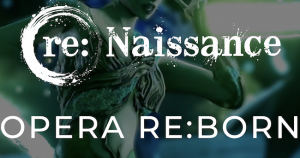 Lindsay: That’s an interesting question. In the wake of the pandemic, opera is dealing with a loss of audience, an aging patron base, issues of burnout, and an interrogation of its role in society. For that reason, companies are balancing new works with revivals and stalwart productions. Against the Grain Theatre is exploring digital works and partnerships with larger institutions in order to support an emerging generation of artists. And re:Naissance Opera is doing some really cool things at the intersection of virtual reality and opera. Larger organizations are partnering with indie and grassroots companies to resource share. The National Arts Centre partnered with artist Teiya Kasahara, who’s co-founder of Amplified Opera, on a solo show that explores how conventions of race and gender exist within the canon. There are tons of critical pieces and initiatives being put forward. Running parallel to this, we see that companies are accepting entertainment and spectacle as an equally important part of the landscape. Different productions inevitably have different aspirations.
Lindsay: That’s an interesting question. In the wake of the pandemic, opera is dealing with a loss of audience, an aging patron base, issues of burnout, and an interrogation of its role in society. For that reason, companies are balancing new works with revivals and stalwart productions. Against the Grain Theatre is exploring digital works and partnerships with larger institutions in order to support an emerging generation of artists. And re:Naissance Opera is doing some really cool things at the intersection of virtual reality and opera. Larger organizations are partnering with indie and grassroots companies to resource share. The National Arts Centre partnered with artist Teiya Kasahara, who’s co-founder of Amplified Opera, on a solo show that explores how conventions of race and gender exist within the canon. There are tons of critical pieces and initiatives being put forward. Running parallel to this, we see that companies are accepting entertainment and spectacle as an equally important part of the landscape. Different productions inevitably have different aspirations.
Q: Overall, is there a role for the arts in addressing social change?
Lindsay: There isn’t one straight answer to that. I presume that the answer will also vary depending on who you ask. The instrumentalization of the arts — using the arts to address broader social or economic issues — has been embedded in our cultural policy and rationale (and public consciousness) for quite some time.
The arts are inherently social, but the “socialness” of the arts can also be exploited. Scholar Adam Saifer looks at “art for social change philanthropy.” He points to the fact that this ‘progressive turn’ in arts philanthropy often commodifies artists (particularly the racialized poor) without shifting their material or economic realities. This is important work.
The arts’ fluidity, immeasurability and subjectivity leaves it open to take on many forms and absorb many claims. This presents a host of challenges. It also makes for a beautiful, fertile ground for experimentation, world-building and hope. I love academia and research and am deeply grateful for the privilege to contribute here. I am an artist in my bones, though.
Meghan Lindsay is on LinkedIn. Banner photo is courtesy of Gabriel Varaljay. Photo of Artscape Theatre Centre is courtesy of Adamina and Wiki Commons.
Please sign up for the MPNL newsletter, PANL Perspectives.
Tuesday, November 14, 2023 in Arts, For homepage, Leadership & Governance, News & Events, Public Policy & Advocacy, Social Justice & Change
Share: Twitter, Facebook
